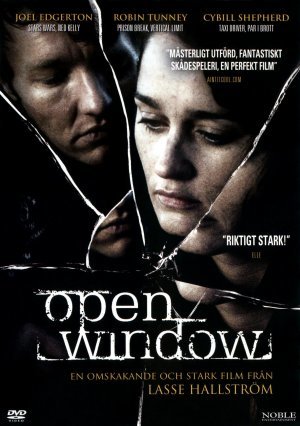
Open Window (2006), directed by Mia Goldman, is a poignant drama that delves into the emotional and psychological aftermath of a traumatic event on a couple’s relationship. Featuring compelling performances by Robin Tunney and Joel Edgerton, the film offers a sensitive exploration of healing and resilience. Now streaming on https://123movies26.com/, it continues to resonate with viewers seeking intimate, character-driven stories that confront pain with honesty and grace.
Plot Summary
Izzy (Robin Tunney), a dedicated photographer, and her fiancé Peter (Joel Edgerton), a college professor, are deeply in love and eagerly planning their wedding. Their lives take a harrowing turn when a stranger enters their home through an open window and assaults Izzy. This traumatic event shatters their sense of security and profoundly impacts their relationship. As Izzy grapples with the emotional turmoil and trauma, Peter struggles to support her while dealing with his own feelings of helplessness and frustration. The film intimately portrays their journey through pain, healing, and the quest to rediscover trust and intimacy.
Cast & Performances
Robin Tunney delivers a powerful and nuanced performance as Izzy, authentically depicting the complexities of a survivor’s emotional landscape. Her portrayal captures the vulnerability, strength, and confusion that accompany the healing process. Joel Edgerton, as Peter, effectively conveys the internal conflict of a partner striving to provide support while confronting his own emotional challenges. The chemistry between Tunney and Edgerton adds depth to their characters’ relationship, making their struggles and attempts at healing resonate with the audience. Supporting performances by Cybill Shepherd and Elliott Gould, as Izzy’s parents, contribute additional layers to the narrative, highlighting the broader impact of trauma on family dynamics.
Direction and Production
Mia Goldman’s directorial debut is marked by a delicate and empathetic approach to sensitive subject matter. Drawing from personal experience, Goldman infuses the narrative with authenticity and emotional depth. The film’s cinematography utilizes the serene Southern California setting to contrast the internal chaos experienced by the characters, effectively highlighting the disruption of their once peaceful lives. Goldman’s background as an editor is evident in the film’s pacing and structure, allowing the story to unfold organically while maintaining viewer engagement.
Themes and Interpretation
Open Window explores themes of trauma, healing, and the resilience of human relationships. It delves into the complexities of coping with a life-altering event and the ripple effects on personal identity and interpersonal connections. The film also examines the challenges of communication and understanding between survivors and their loved ones, emphasizing the importance of empathy and patience in the healing journey.
Reception
The film received mixed reviews from critics and audiences. John Anderson of Variety described it as “a righteous, genuine and emotionally precise movie,” though he noted it “still goes down like medicine.” Audience reactions varied, with some praising the authentic performances and sensitive handling of the subject matter, while others felt the pacing was slow and the narrative lacked tension. Despite differing opinions, many acknowledged the film’s earnest attempt to portray the complexities of recovery and the impact of trauma on relationships.
Conclusion
Open Window is a heartfelt exploration of the aftermath of trauma and its effects on love and partnership. Through compelling performances and thoughtful direction, the film offers an intimate look at the challenges of healing and the strength required to rebuild trust and intimacy. While it may not appeal to all viewers due to its heavy subject matter and deliberate pacing, those interested in character-driven dramas that tackle complex emotional issues may find it a worthwhile and moving experience.
